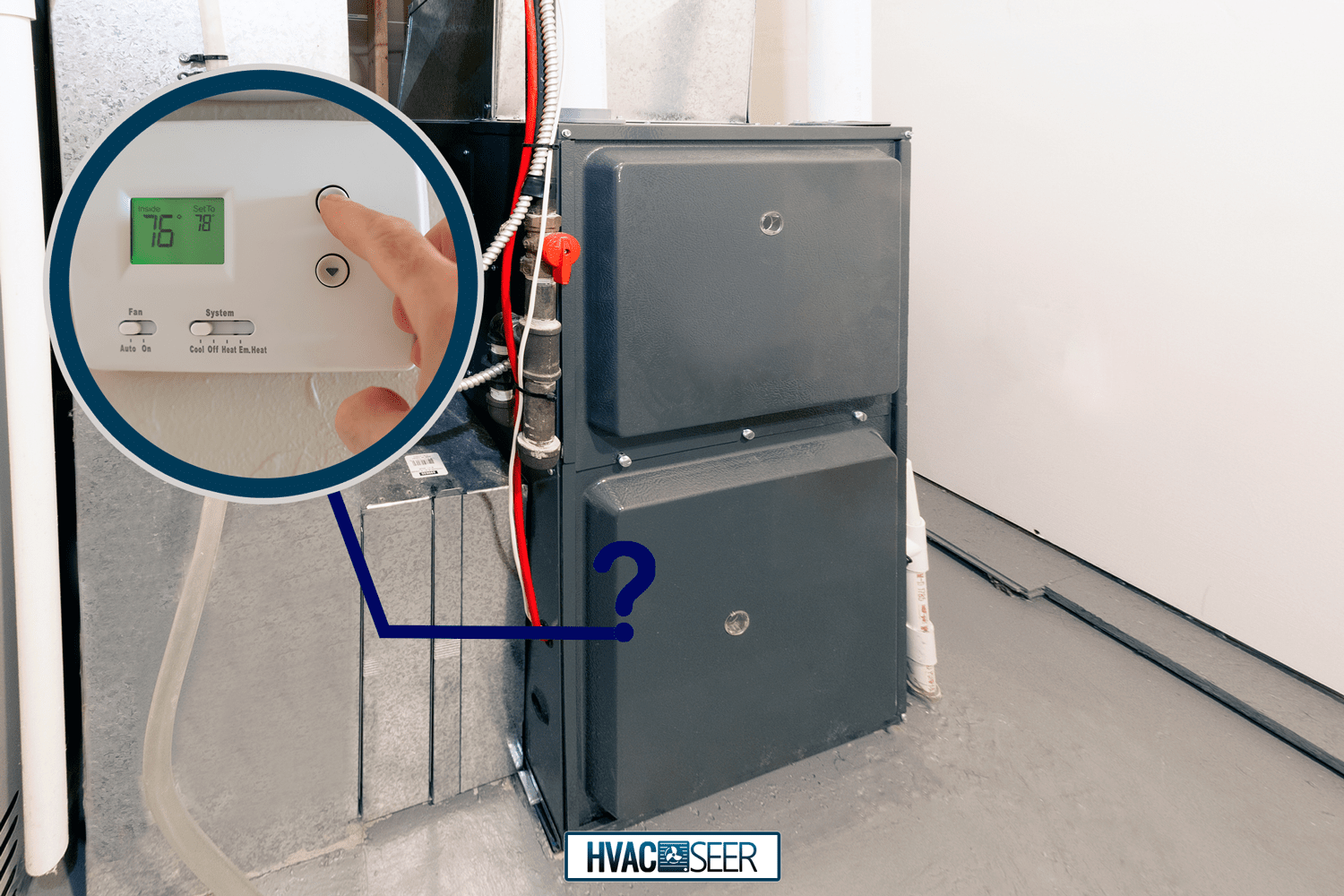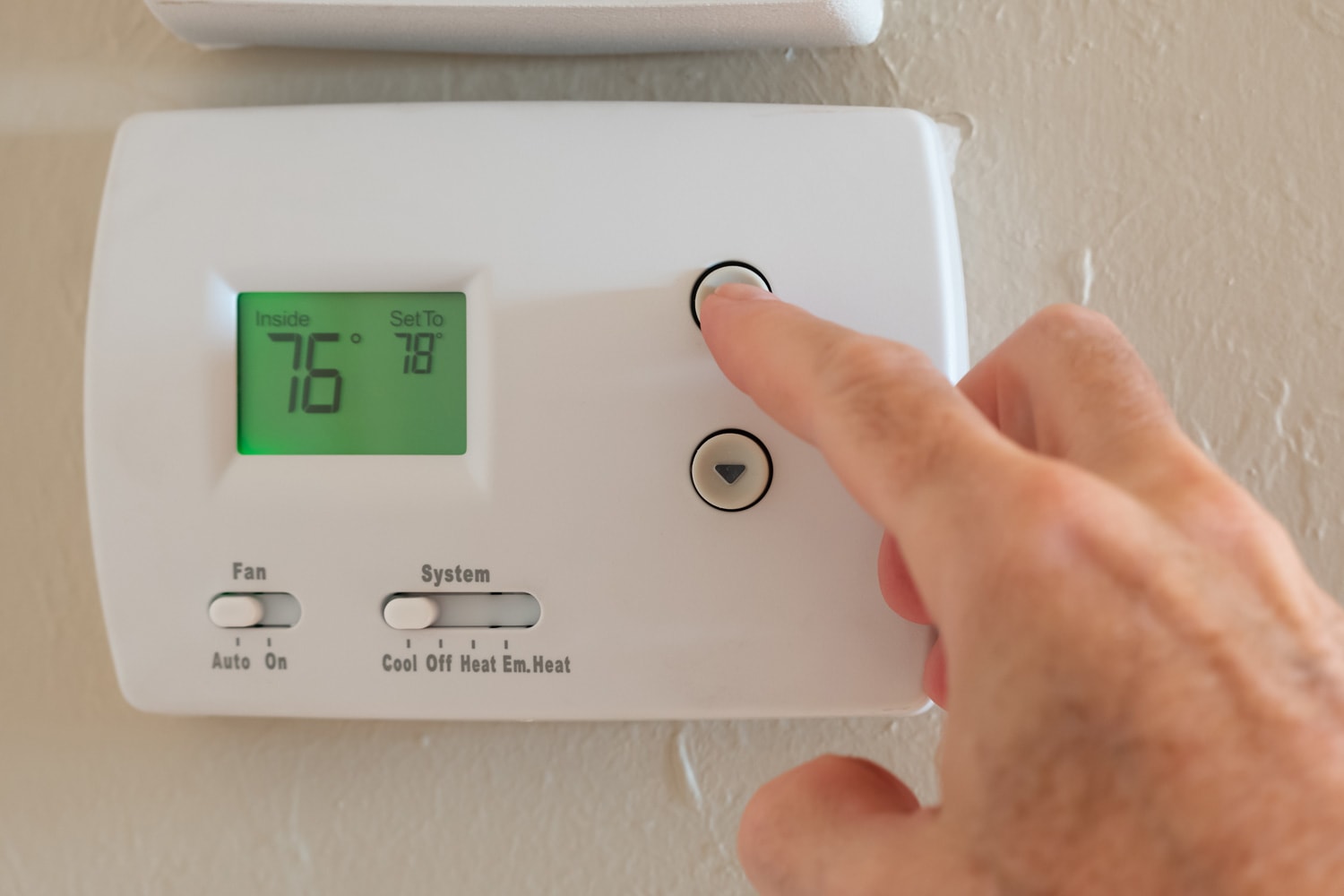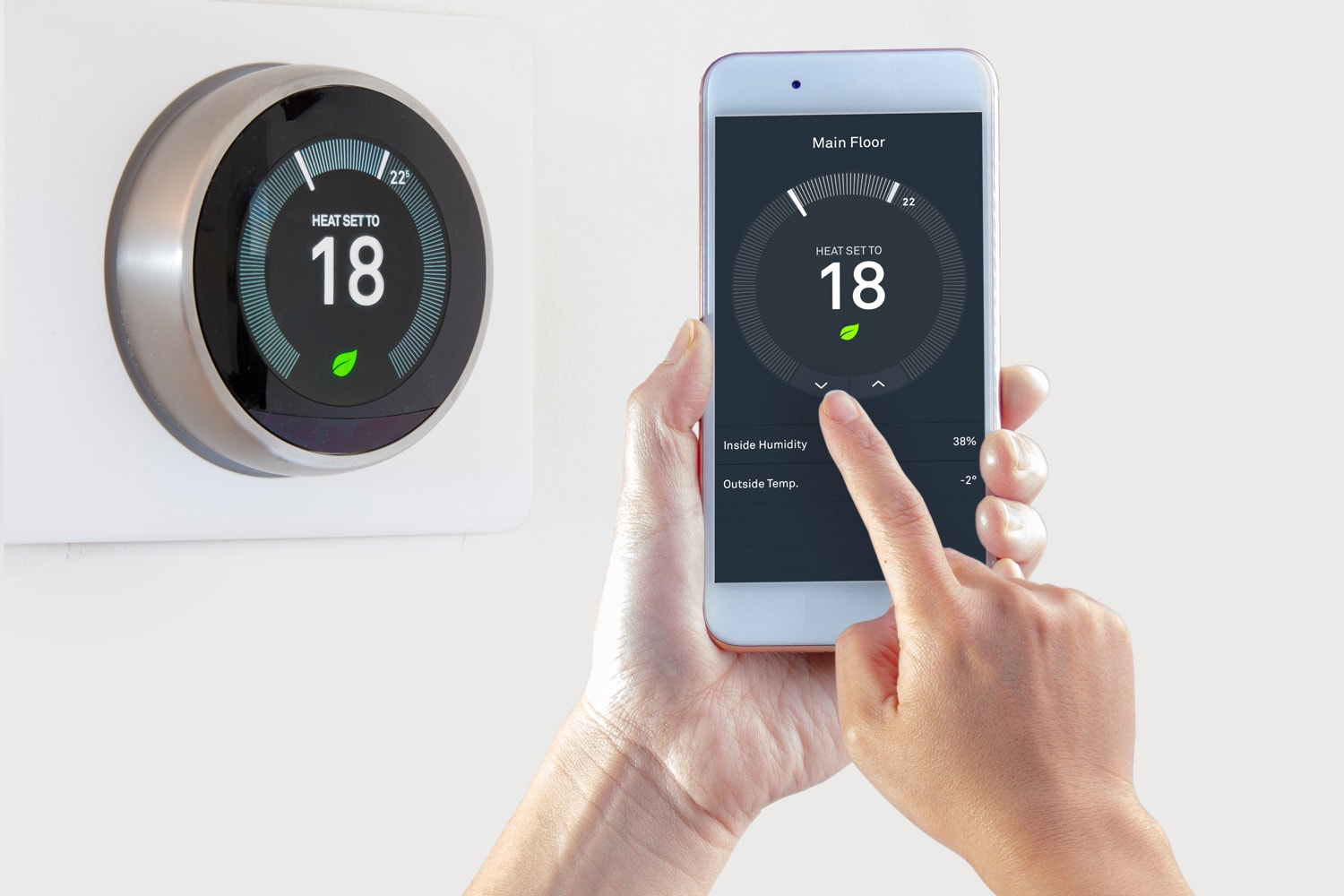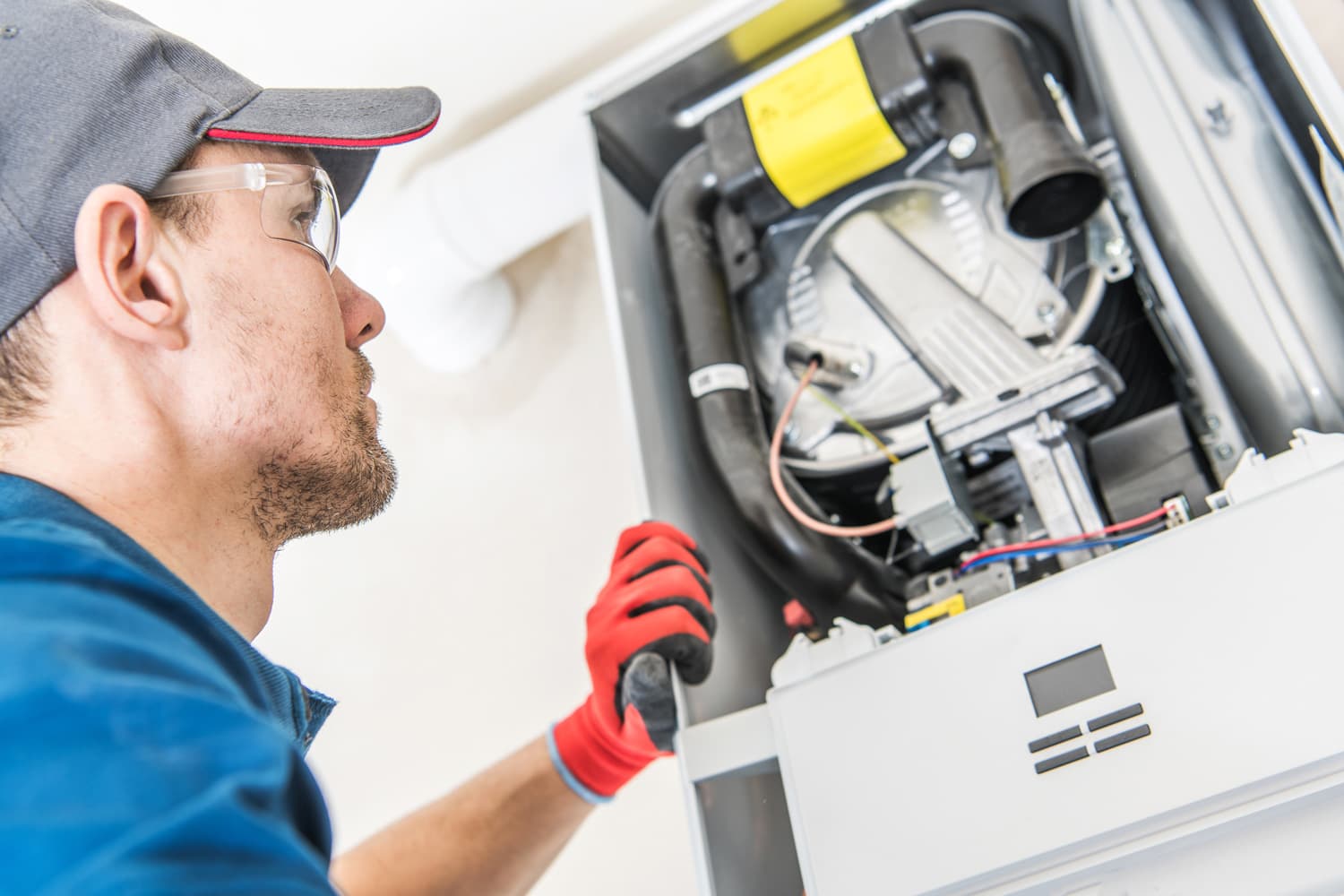Getting a new furnace can be daunting, as there are many different types and options on the market. For example, does a new furnace come with a new thermostat? Let's see if this is something you should factor in when you're getting a new furnace.
The type of furnace you purchase may or may not come with a new thermostat. For example, many high-efficiency furnaces have built-in thermostats designed to save energy. If the furnace doesn't have a new thermostat, you should still consider purchasing one. Newer thermostats are more accurate than older models and can save you money on your energy bills.
There are several things to consider when purchasing a new furnace. In this article, we will discuss whether or not you should purchase a new thermostat and your new furnace. In addition, we will answer other frequently asked questions about furnaces, so read on!

Will I Get A New Thermostat When Buying A Furnace?
If your current furnace has reached its end of life and you're in the market for a replacement, you may wonder if the new furnace will come with a new thermostat. Unfortunately, the answer to this question depends on the type of furnace you purchase.
Many high-efficiency furnaces sold today come with built-in thermostats designed to save energy. However, you may need to purchase a new thermostat separately.
Some companies will provide a free programmable thermostat by purchasing a new furnace. This is a great way to save money on your energy bills and keep your home comfortable all year long.
Typically, your current thermostat is dated if you are getting a new furnace. But, even if not, it may not be as energy efficient as the new models on the market. When shopping for a new furnace, ask the salesperson if the unit comes with a new thermostat. If not, factor the price of a new one into your budget.
You may also be able to find a bundle deal that includes both the furnace and thermostat. This can be a great way to get everything you need in one purchase.

What Are The Benefits Of A New Thermostat?
There are several benefits to getting a new thermostat, even if your furnace doesn't come with one. Let's take a look at them below:
Lower Energy Bills
As we mentioned earlier, newer thermostats are more accurate than older models. This means that they can better regulate the temperature in your home, which can lead to lower energy bills.
You can save money on energy bills by programming your thermostat to lower the temperature when you're not home. Many newer thermostats have this feature built in, so it's easy to set and forget.
Ease Of Use
The technology of new thermostats has come a long way in recent years. Many of them can be controlled from your smartphone, so you can adjust the temperature no matter where you are.
Some thermostats even have voice-activated controls, so you can tell them to turn the temperature up or down without ever having to lift a finger. This is especially convenient if your hands are full or if you're in a different room.
Improved Comfort
New thermostats are more accurate than older models, which means they can better regulate the temperature in your home. This can lead to improved comfort for you and your family.
Data Tracking
Some newer thermostats come with data tracking features that can help you save money on your energy bills. By understanding how much energy your home uses, you can make changes to save money.
For example, if you notice that your energy use spikes during the day, you may want to consider changing your thermostat settings. Or, if you see that your energy use is highest when the temperature is set to 72 degrees, you may want to consider setting it to 68 degrees instead.
These features can help you save money on your energy bills and keep your home comfortable at the same time.
Extends Heat Pump Life
If you have a heat pump, a new thermostat can help extend its life. This is because newer thermostats are designed to work with heat pumps, so they can better regulate the temperature in your home.
Efficient Climate Zones
If you have multiple climate zones in your home, a new thermostat can help you save money on your energy bills.
Many newer thermostats come with features that allow you to set different temperatures for different parts of your home. For example, you may want to keep the temperature in your living room at 72 degrees and the temperature in your bedrooms at 68 degrees.
This can help you save money on your energy bills because you're not heating or cooling parts of your home that you're not using.
Better Indoor Air Quality
If you suffer from allergies or asthma, a new thermostat can help improve the indoor air quality in your home.
Many newer thermostats have features that allow you to control the humidity in your home. By keeping the humidity at a comfortable level, you can help reduce the amount of dust and pollen in the air. This can lead to improved indoor air quality and better respiratory health for you and your family.

Should I Repair Or Replace My Furnace?
There are different factors to consider when deciding whether to repair or replace your furnace. Let's take a look at them below:
Age Of The Furnace
One of the main factors to consider is the age of your furnace. If your furnace is more than 15 years old, it may be time to consider a replacement.
This is because furnaces typically have a lifespan of 15-20 years. So, if your furnace is getting up there in age, it may be less efficient and start to break down more often.
Efficiency
Another factor to consider is the efficiency of your furnace. If your furnace is not very efficient, then it may be time to replace it with a newer, more efficient model. Newer furnaces are much more efficient than older models. As a result, they use less energy to heat your home, which can lead to lower energy bills.
If you're unsure how efficient your furnace is, you can check the yellow Energy Guide label. This label will give you an estimate of the annual operating costs for your furnace.
Repair Costs
Another factor to consider is the cost of repairs. If your furnace needs frequent repairs or the cost of repairs is more than half the cost of a new furnace, it may be time to start considering a replacement.
Frequent repairs can be expensive, and they can also be a sign that your furnace is reaching the end of its lifespan.
If you're unsure whether to repair or replace your furnace, you can always ask a professional for their opinion. They can help you weigh the benefits and drawbacks and make the best decision for your home.

Why Is Replacing A Furnace So Expensive?
If you're considering replacing your furnace, you may wonder why the cost is so high. The main reason is that they are a long-term investment that almost every home needs.
However, the price can vary widely depending on a few factors. Let's take a look at some of the factors that contribute to the cost of a new furnace:
Size
The main factor contributing to the cost of a new furnace is size. Furnaces come in different sizes, and the size you need will depend on the size of your home.
If you have a large home, you'll need a larger furnace to heat it. Unfortunately, this means that the cost of your new furnace will be higher.
Type
There are different types of furnaces to choose from. Heat pumps and furnaces are the most common, but there are also boilers and solar-powered furnaces.
The type you choose will depend on your needs and preferences. For example, a heat pump may be more expensive up front, but it will be more energy efficient in the long run.
Efficiency
The efficiency of your furnace also contributes to the cost. The most efficient furnaces are more expensive than less efficient models. However, they'll save you money in the long run because they use less energy to heat your home. This means that your energy bills will be lower.
Features
Another factor that contributes to the cost of a new furnace is its features. Some furnaces come with unique features that make them more expensive.
For example, some furnaces come with variable speed blowers. This means that the furnace can adjust the speed of the blower based on how much heat is needed. This can save you money on your energy bills because the furnace won't have to run as long.
Installation Costs
The cost of installation is also a factor to consider. Again, the installation price can vary depending on the type of furnace you choose and the company you hire. If you're unsure how much it will cost to install your new furnace, you can always ask the company for an estimate.
As you can see, there are a lot of factors that contribute to the cost of a new furnace. However, the price is worth it because a furnace is a long-term investment that almost every home needs.

Final Thoughts
When you purchase a new furnace, a new thermostat will increase home comfort, lower energy usage, and save you money. Speak to a professional to see if the furnace comes with a new thermostat. If not, ask how much it would cost to install one.
Made it to the end? Here are other articles you might find helpful:
Furnace Not Responding To Thermostat – What To Do?
Honeywell Pro Series Thermostat Not Working – How To Reset It?
